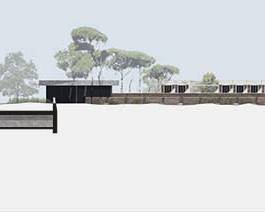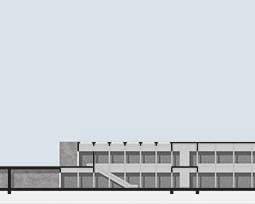Piranesi Prix de Rome 2018
Politecnico di Milano
Scuola AUIC – Dipartimento ABC
Università di Parma
Dipartimento di Architettura e Ingegneria
Coordinators:
Michele Caja, Martina Landsberger and Carlo Gandolfi
Design team: Michele Caja, Martina Landsberger, Carlo Gandolfi, Sotirios Zaroulas, Bunker Arc (Roberto Molteni e Matteo Donghi), Atelier De Molfetta Strode (Federico de Molfetta e Hope Strode)
Advisors: Alessandra Valentinelli, Lilia Palmieri, Maria Vittoria Capitanucci
Students: Zhichao You, Jiahe You, Alberto Gatti, Riccardo Piconi, Giuseppe Miotto
Tivoli environment hosts a mix of Mediterranean endemisms and continental flora that took refuge at the time of glaciations and proves the settlement of the first human clusters here attracted by the fertility of lava soils, the abundance of stone materials, thermal waters, potable and spring.
They brought to this place fruit-bearing, edible and pharmaceutical species.
The proposal aims to increase the dynamics of ecosystem services that feed the biodiversity of Villa Adriana ensuring its resilience: a single, organic strategy that, on one hand, exploits the ecological connections of the river and on the other takes advantage of the potentials present in the buffer ecosystem.
The project pivots on the Aniene River whose riverbeds are physically connected to the park of the Villa and reserved for the spontaneous development of riparian vegetation.
From this perspective the return to the city of Plauti Mausoleum at Ponte Lucano is addressed. Its vulnerability dates back to the embankment that reduced the traffic flow; its restoration provides for
the reconstitution of the historical riverbed on the right bank: moving back the embankment near to Vicolo dei Plauzi, returning the land in front, at a lower level, to free flooding, and repositioning the defenses of Via Maremmana, downstream of the Tomb.
The scattered adaptation of the fluvial territory outlines a park connecting the new entrance of Villa Adriana to Villa d’Este: a path that can be walked, bycicled or traversed on horseback, alterable from nature and time.
Strada dell’Aquoria, that is accessible from a second circuit, is reserved for the transit of residents and rescue vehicles.
The buffer is intended for the planting of nurseries and orchards where to accommodate the species of the agronomic tradition of the area: a research centre for the “in situ” conservation and study on endemic and ruderal species, an outdoor laboratory that, safeguarding the ancient naturalistic complexes, contributes to their understanding.












